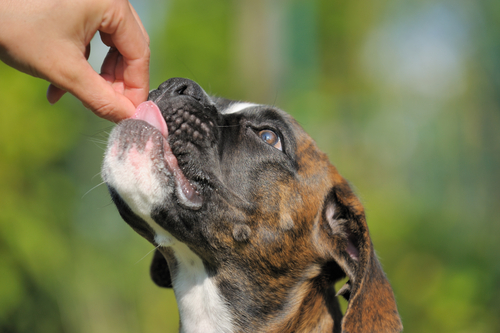Dog owners that suffer from allergies should pay close attention to the dog they are bringing into their home. Certain breeds are considered excellent candidates for an allergy prone home due to their reduced dander levels and low shedding volume. These breeds are often crossed with other breeds in an effort to guarantee an allergen free dog. While no dog is completely allergen free, many allergy sufferers swear by certain breeds. What’s an owner to do when an allergen free dog suddenly develops her own allergies?
Allergy relief
It may never be determined exactly what the dog is allergic to, but it is obvious she is allergic to something. Her eyes are suddenly red and puffy, her skin is dry and cracked, and there’s the constant licking of paws serving as a clear indication something isn’t agreeing with her. An owner’s only resource is to talk to a vet. Due to the varying degrees of allergens and how a dog reacts, will depend on course of treatment. It isn’t in the dog’s best interest for an owner to try and treat this on their own. The allergic reaction may worsen.
Common allergy culprits
There are hundreds of things for dogs to have an allergic reaction to. Some of the more common culprits are tree, grass, dust mites, mold spores, feathers, cigarette smoke or even the food they eat. Canine specific shampoos still may hold additives that may harm a dog’s sensitive skin. Perfumes and scents such as fabric softeners can be caustic to a susceptible sniffer. Clean the living area thoroughly with unscented soap, water and white vinegar. Vinegar is a valuable cleaning agent in many shelters that kills germs without leaving a chemical residue or odor.
Sound nutritional advice
Most vets will look at the diet of the dog and insist on switching to a formula with limited ingredients. They may also analyze the ingredient list and suggest a digestive friendly blend such as duck and potato blend. There are treats available that are allergy and digestion friendly. If there is any doubt about the treats or the food, home made treats and meals are always an option. Discuss with the veterinarian about what ingredients are essential and which should be avoided.
Additional ideas
There are some elements that simply can’t be removed from a dog’s living space, so medication may be prescribed to ease the dog’s symptoms and make her more comfortable. To keep the skin whole and hydrated add a tablespoon of flaxseed oil to her meal. The oil is full of the fatty acids skin needs to maintain health. Make a simple shampoo in the kitchen to use on the dog. An owner will know exactly what is being used on the dog and there are no hidden additive to exacerbate an allergy.

